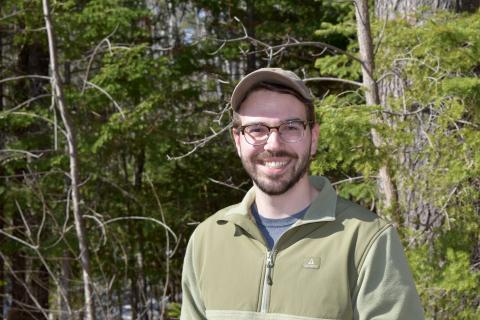Having worked on two other Great Lakes—Huron and Michigan—Brandon Byrne feels fortunate to be settling down along the south shore of what he describes as, “the greatest lake” Gichigami, or Lake Superior, to take on his role as a wetland ecologist.
Byrne’s interests and work experience range from studying the feeding ecology of fish-eating birds to monitoring plants and amphibians in coastal wetland communities. During free time, Byrne enjoys hiking, wildlife photography, and playing the guitar. Originally from Hammond, Wisconsin, he is eager to contribute to the protection of treaty resources throughout the Ceded Territories.
Byrne’s role has two major components: the first is partnering with Keweenaw Bay Indian Community tribal member and GLIFWC specialist Kathy Smith, Genawendang Manoomin, (she who cares for the rice) to support manoomin. A high priority for Ojibwe tribes, wild rice work includes restoring, monitoring, and protecting manoomin waters. Byrne is also charged with overseeing waterfowl and aquatic plant management activities.
Byrne earned his bachelor’s degree in biology and master’s degree in environmental science and policy from the University of Wisconsin-Green Bay.
